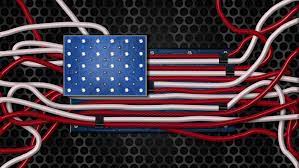“This is something both sides of the political aisle have talked about for a long time,” says Kevin DeGood, director of infrastructure policy at the Center for American Progress. “This bill is in line with the sort of rough estimates of what it will take to try to bring broadband internet to everybody in America.”
Here’s what you need to know about what this bill means for internet access.
The government has allocated $42.4 billion towards a Broadband Equity Access and Deployment Program, which is just what it sounds like, says DeGood. In areas without internet service, or with spotty, intermittent service, there will be an auction in which private companies can bid on how much money they would need in order to build out real broadband internet access.
The Pew Research Center consistently finds that affordability is a huge barrier to broadband adoption in the United States. A program called the Affordable Connectivity Fund seeks to address this, allocating $14.2 billion to provide a $30 monthly subsidy to bring down the cost of monthly internet access charges for households that are at or below 200 percent of the federal poverty line. This program is a continuation of the $3.2 billion Emergency Broadband Benefit Program, or EBBP, started during the pandemic to help low-income Americans get online.
Two billion dollars will go towards making sure indigenous communities have access to the internet, and $2.75 billion will go towards “digital equity plans,” like computer labs for your local library.
The pandemic definitely played a role in pushing this bill to pass. “I think we’ve known for a long time that access to broadband was unevenly distributed,” Tejas Narechania, faculty director at the Berkeley Center for Law & Technology, says. “But the pandemic, working from home, schooling from home, ordering online, and relying on streaming services for entertainment sharpened our focus on the need for reliable internet everywhere.”
Narechania points out that the EBBP benefit, which started during the pandemic, is what has been modified and extended in this bill. But the EBB offered households subsidies of $50, while this new bill will only offer a subsidy of $30, so some households will have to pay $20 more out of pocket for internet service.
“But the program was due to expire, so these consumers are in fact better off than they otherwise would have been,” says Narechania.
Experts have made different estimates on how much it would cost to get wall-to-wall coverage nationally. It’s tricky to know how much this bill will narrow the digital divide because we don’t have accurate maps of where service is or isn’t, says DeGood, because of the nature of the technology.
Source : https://www.popsci.com/technology/infrastructure-bill-broadband-access-us/









